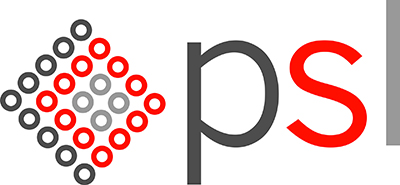Powder Systems' guide delineates the processing methods behind sustained drug delivery microspheres. The company shares: "We will also consider the application of these microspheres in oncotherapy, skin wound healing, and bone repair.
Sustained Drug Delivery Microspheres Processing Methods
The main objective of tissue engineering is to provide a suitable biological alternative to organs or tissues that have deteriorated due to disease or harm. Microspheres that offer sustained drug delivery can support this ambition by managing the release of drugs or therapeutics. Once the therapeutic has been placed within the core of the microsphere or remains on its surface release can occur. A sustained release is achieved when the polymer matrix begins to deteriorate.
Applying sustained delivery microspheres can offer a variety of benefits for tissue engineering. Not only can the sustained release mean that the therapeutic is applied over a longer time frame, but they can target particular cells and tissues due to their consistent shape and size. These microspheres can even help form beneficial microenvironments that encourage regeneration of tissue.
Sustained Drug Delivery Microspheres Processing Methods
The fabrication of sustained drug-release microspheres is achieved through several sophisticated techniques.
Emulsification Method – encompasses emulsion-solidification and emulsification dispersion processes, incorporating surfactants and chemical crosslinkers to stabilise the microspheres with the drug. This precise droplet formation is critical for these methods as it can ensure the consistent release profiles of the drugs they carry.
Microfluidic Method – offers meticulous control over droplet size. It leverages active processes, such as optical and electric drives, or passive ones, like flow focusing, to generate uniform microspheres. The monodispersity attained through these methods is crucial in achieving predictable and steady drug release kinetics.
Selecting an appropriate processing technique is contingent upon the nature of the drug, the desired release profile, and the target application. Such choices can significantly influence the efficacy, safety, and overall success of the treatment regimen.
Also, consider the particle sizes of your microspheres. Sizing can affect how it is going to act during use. You can do this through:
- Dynamic light scattering
- Optical microscopy
- The Coulter Principle.
Applications in Stem Cell Research
Sustained drug delivery microspheres can act as the building blocks for stem cell differentiation. A stem cell, in cell culture, can be useful for treatments because of its ability to turn into a specialised cell.
Drug delivery microspheres can contain a broad-ranging set of proteins and small molecules from specific drugs. Both of these types of molecules can affect how well stem cells can develop into specialised cells. Examples of this include the creation of phenotypes that can make a cell suitable for recreating tissue.
Controlling the microsphere’s release can provide long-term benefits for drug delivery applications. Small amounts of specific molecules can be used as a tailored growth factor for cells. This emphasises their versatility.
Applications in Disease Management
Oncotherapy: Microspheres serve as sustained-release carriers. They can localise the delivery of anti-cancer agents directly to the tumor site. This minimises systemic exposure and adverse effects.
Skin Wound Healing: Sustained-release microspheres can be pivotal in the skin’s healing process. They can facilitate hemostasis and deliver therapeutic agents to the wound site. This can promote tissue regeneration and minimises scar formation.
Bone Repair: Microspheres offer a promising avenue in bone repair as their sizes and structures can be modified. They provide a scaffold conducive to cell adhesion and proliferation. For instance, chitosan microsphere delivery systems have shown promise in enhancing bone morphogenetic protein-induced osteogenesis, which is crucial for bone regeneration.
Arthritis: Symptoms of arthritis include impaired mobility and can also deteriorate a patient’s quality of life. Microspheres are capable of targeted drug delivery that mitigates the adverse effects typical of systemic therapies. By ensuring the controlled release rate and localised action of therapeutics, they offer a targeted approach to suppress proteoglycan loss in chondrocytes. This is crucial for cartilage preservation.
Interested in Sustained Drug Delivery Microspheres?
Sustained drug delivery microspheres represent a transformative element in tissue engineering, offering a versatile and effective approach to disease management. These drug delivery applications provide the localised and controlled release of therapeutics and vow to enhance the efficacy of treatments across various medical disciplines.
By continuing to refine the processing methods and applications of sustained drug delivery microspheres, researchers and clinicians can look forward to improved patient outcomes and a new era of personalised medicine.
At Powder Systems Limited (PSL), we understand the critical role that advanced and sustained drug delivery systems and medical devices play in the future of healthcare. Our cutting-edge solutions are designed to meet the evolving needs of the pharmaceutical industry. This includes the processing of long-acting injectable drugs.
We invite you to explore our insights on long-acting injectable drug processing. Discover how our expertise can enhance your pharmaceutical applications. To delve deeper into sustained-release drug delivery and therapeutics, visit our Long-Acting Injectable Drug Processing page or find out more about Microsphere Formulation."

